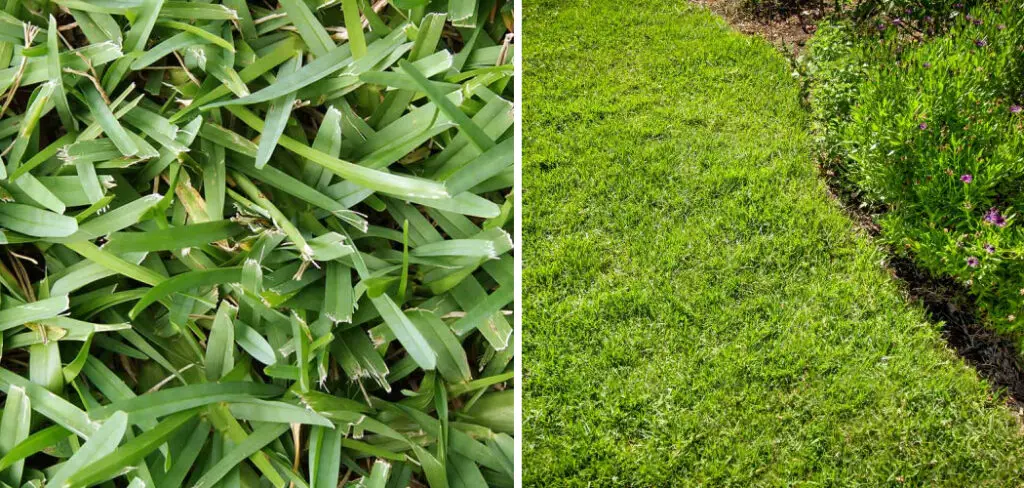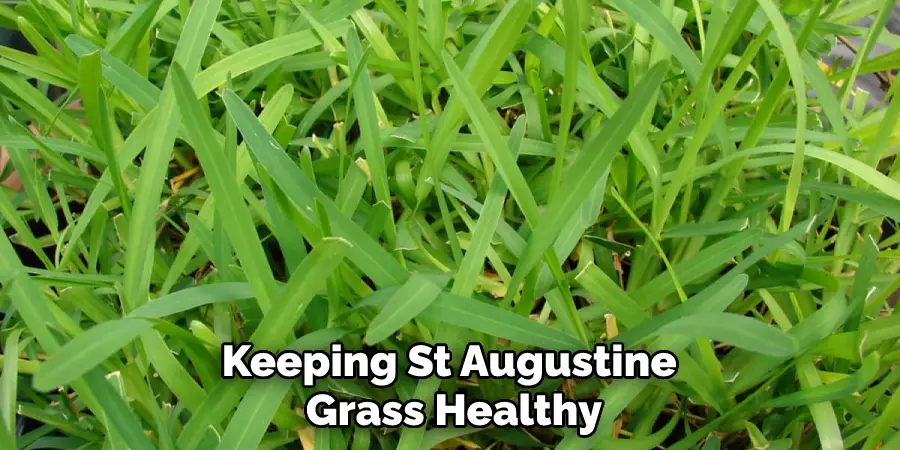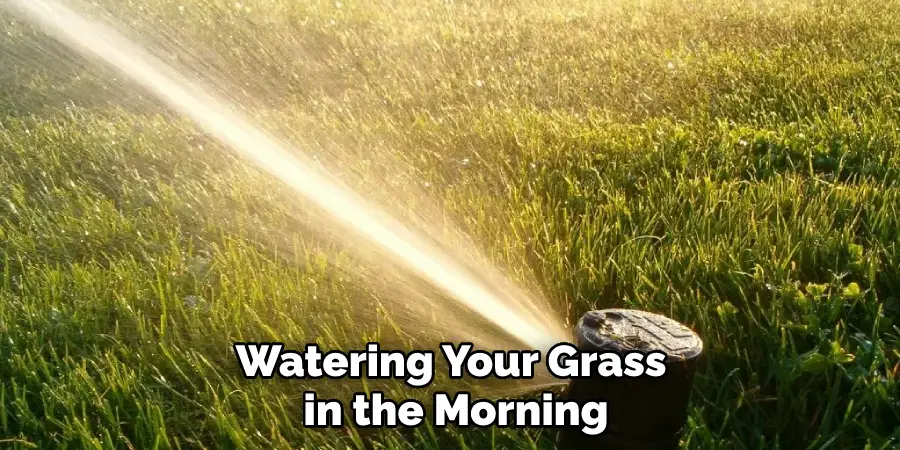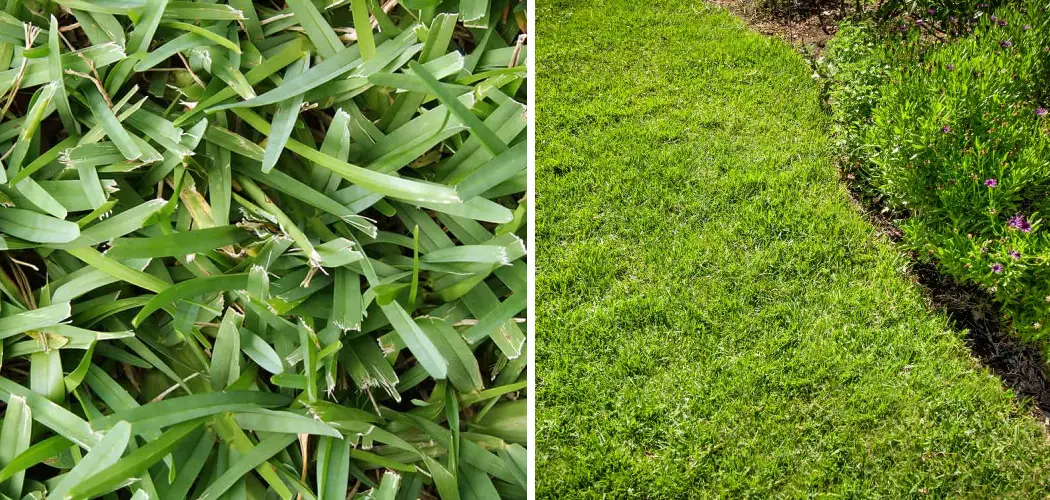Watering is essential for any type of grass, including St Augustine grass. You must know how to water st augustine grass. As with many plants, the amount and frequency of watering can affect the quality of your lawn – too much water and you may be at risk for pests or fungus growth;

not enough water can cause dehydration stress that leads to discoloration and weak roots. So how should you go about watering your St Augustine grass? Read on to learn more!
Tools You Will Need
1. Garden Hose
2. Sprinkler (optional)
6 Suggestions on How to Water St Augustine Grass
1. How Often Should You Water?
When it comes to keeping St Augustine grass healthy, regular watering is essential. During times of hot and dry weather, watering at least once a week should be sufficient and may need to be increased if the temperatures remain unusually high for an extended period.
It is important to water thoroughly, especially during long dry periods, to avoid St Augustine grass from showing signs of dehydration such as wilting or browning.

Soil moisture testing or the use of a soil probe can eliminate guessing games about when to water and help prevent overwatering. By following a consistent watering schedule based on the specific environmental conditions in your area, you can ensure that St Augustine grass remains healthy and vigorous year-round.
2. How Much Should You Water?
Watering your lawn can be a tricky business, as you never want to overwater it. However, providing the right amount of water is integral to keeping your lawn looking and feeling healthy. If you have St Augustine Grass, it’s important to follow the watering recommendations of an inch of water each time you water.
While this may seem like a small amount, over time it adds up and ensures that all parts of your lawn receive the moisture they need. Different tools can also help you measure, such as a rain gauge or a tuna can placed on the lawn which should easily give you an idea of how much to water.
3. How Should You Water?
Watering your St Augustine grass is an important part of lawn care. To ensure that the water has its best chance at lifting the roots and nourishing the grass, it’s important to apply it evenly throughout your yard.
A garden hose is an effective way to accomplish this task in small to medium-sized yards, but if you have a larger area of grass to cover, you may want to look into purchasing a sprinkler.

This will help ensure that each patch of grass receives an even distribution of water during irrigation. Hopefully, with this advice, your St Augustine grass will stay healthy and vibrant for many years to come!
4. How Deep Should You Water?
Keeping a healthy lawn is an important part of maintaining your outdoor space and St Augustine grass is a popular warm-weather turf grass choice. To maintain your St Augustine lawn in the best possible condition, it is essential to water it deeply.
This means that you should ensure that the water penetrates the surface of the soil by at least six inches. If you can reach this depth when watering, your St Augustine grass will thank you by providing a lush, vibrant, and healthy lawn all year round.
5. When is the Best Time of Day to Water?
Watering your grass in the morning or early evening is the most effective time to ensure that your lawn is getting enough water. During these periods, temperatures are cooler, reducing the risk of evaporation. Furthermore, watering in the AM or PM keeps the soil at a more moderate temperature and lessens moisture loss due to winds during the summer months.

Doing this will give Water St Augustine Grass a necessary boost during periods of drought; although bear in mind that it’s important not to overwater! Too much water can cause fungus and other lawn diseases, so make sure you’re aware of how much water your lawn needs before you start irrigation.
6. How to Check for Proper Irrigation?
Checking for proper irrigation is an important part of proper lawn care to prevent the grass from becoming too dry or overwatered. To check for proper irrigation, a good tip is to take a handful of soil from different parts of the lawn and feel it. If it is dry to the touch, this means that your St Augustine grass needs more water.
This process should be done regularly to ensure your lawn is getting enough water and avoiding over or underwatering. Keep an eye on your grass and make sure you’re providing it with just the right amount of hydration – be sure to Water St Augustine Grass as needed!
By following these simple steps, you can ensure that your St Augustine grass stays healthy and strong. With proper watering, your lawn will stay lush and green all year long. Happy watering!
Tips to Water St Augustine Grass
- Water your St. Augustine grass early in the morning. Watering your grass early in the morning allows the water to seep into the soil before evaporating in the heat of the day. This will help to keep grass healthy and prevent it from drying out.
- Use a sprinkler system with an adjustable nozzle. Using a sprinkler system with an adjustable nozzle will help you to control how much water your grass is receiving. This is important as too much water can harm your grass, causing it to become soggy and susceptible to disease.
- Water your grass deeply, but less frequently. It is better to water your grass deeply, but less frequently, than to water it shallowly and more often. This is because deep watering encourages deeper root growth, which helps your grass to withstand drought conditions better.
- Avoid overwatering your grass. Overwatering your grass can cause several problems, including fungal diseases, thatch buildup, and shallow root systems. If you notice that your grass is beginning to turn yellow or brown, this is a sign that it is being overwatered.
- Use a mulching mower when cutting your grass. Using a mulching mower when cutting your grass will help to add nutrients back into the soil as well as reduce evaporation. This will help to keep your grass healthy and prevent it from drying out.
- Aerate your lawn regularly. Aerating your lawn regularly will help to improve drainage and prevent compaction of the soil. This will allow oxygen and water to reach the roots of your grass more easily, promoting healthier growth.
- Test the soil before watering. Before watering your lawn, it is always a good idea to test the soil first. This can be done by using a soil moisture meter or simply sticking your finger into the ground up to the second knuckle.

How Much Water Does Your St Augustine Grass Need?
St Augustine grass is a highly popular lawn grass in the grass due to its cool-season growing and dense, green carpeting. Properly caring for your St Augustine starts with knowing how much water it needs.
While the amount of water depends on factors such as climate and soil conditions, the general rule is to water your St Augustine lawn deeply and infrequently. This means that you should give the lawn a deep soaking once or twice a week rather than watering it lightly every day.
Watering too often will encourage shallow roots while over-fertilizing can cause brown patches and other problems.
If there is ample rain in your area, then supplemental water may not be necessary – just try to ensure that the soil remains moist but not soggy. Lastly, if you live in an extremely hot area, your St Augustine lawn may require more frequent deep soakings during summers for better health and appearance.
How to Check if You’re Over or Underwatering Your Lawn?
Caring for your lawn can be a tricky task, so it’s important to know if you’re over or underwatering. A key indicator is the color of your grass. If it appears dull and discolored, that might mean you’re not providing enough water for your lawn.
On the other hand, if there are large puddles or standing water on top of your lawn, that’s a sign that you are giving too much water.
Additionally, grass blades will wilt when they’re dehydrated, while wilting can also be caused by excessive watering as well. To observe how much moisture your soil has absorbed, simply press a screwdriver into the ground; if you can’t easily insert it into the earth’s surface then the soil is likely wet enough.
Finally, make sure to avoid watering in excess during rainy days to ensure healthy and vibrant grass growth.
Conclusion
Overall, watering St. Augustine grass is a fairly straightforward process, but it’s important to pay attention to a few basics to ensure that your grass stays healthy and lush. You should carefully determine how to water st augustine grass. Consistency is key when it comes to watering–you should water your lawn regularly and during the best times of the day.
Proper fertilization is another essential part of the process, so you should make sure that you use the right type of fertilizer for your lawn type and mow it regularly.
Don’t forget to perform regular maintenance tasks like aeration and overseeding twice per year to keep your grass looking its best. By following these simple steps, you can ensure that your St. Augustine grass stays healthy and vibrant for years to come!

